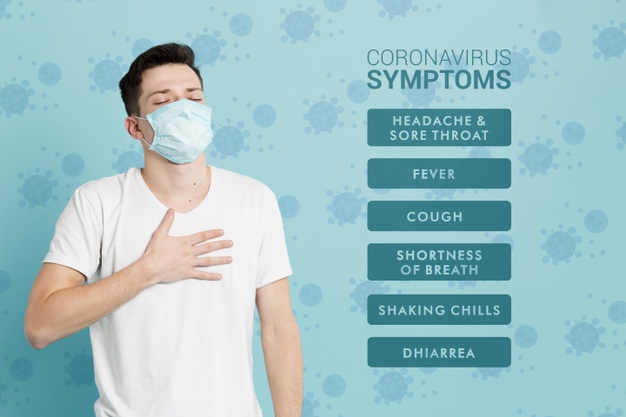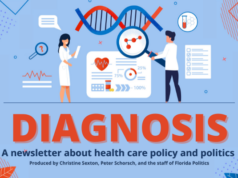
People with any symptoms of COVID-19 or any other illness should stay home until they are symptom-free.
People who are not displaying any symptoms but have been in contact with someone who does have symptoms should also stay home.
People who have mild symptoms or are asymptomatic are still highly contagious and can transmit the virus to vulnerable people or those who are at higher risk of serious illness.
While COVID-19 may only cause a mild cough in a child or young adult, it can lead to life-threatening pneumonia in an older person or a person with an underlying health condition.
Recent research in Wuhan, China, suggested that most people develop symptoms within 4 days of exposure, but the virus may remain dormant for up to 2 weeks.
Keep reading to learn more about the symptoms of COVID-19 by severity level.
Mild symptoms
Some people who have COVID-19 are asymptomatic, which means they do not have any symptoms. This means that they might spread the virus to others without even realizing it.
Others have mild symptoms, such as:
- A fever: The majority of people with COVID-19 experience a fever. A study in The Lancet in February 2020 noted that 98% of people diagnosed with COVID-19 had a fever.
- Muscle pain: Some people might notice increased muscle aches or weakness.
- Fatigue: Some people might have less energy or need more sleep.
Most research on COVID-19 has focused on people who sought treatment for the disease. This means that the existing data have a bias toward people with more severe symptoms.
While viruses such as the flu often hit babies and young children very hard, most research around COVID-19 suggests that young people are likely to experience mild symptoms or no symptoms at all.
Doctors do not really know what mild symptoms of the disease may include. It is possible that any cold-like symptoms could be due to COVID-19.
Moderate symptoms
Most people who get COVID-19 report symptoms similar to bad flu. Those symptoms include:
- a dry cough
- muscle pain
- fever
- fatigue
- nausea, sometimes from excessive coughing
While early reports on COVID-19 focused primarily on respiratory symptoms, new research published in The American Journal of Gastroenterology indicates that 50.5% of people with COVID-19 experience gastrointestinal symptoms, such as diarrhea.
According to ENTUK, some people also report changes in their sense of smell or taste, often before other symptoms appear. Doctors do not understand what causes this, but other viruses can also attack the sense of smell, sometimes permanently.
Severe symptoms
Data on how prevalent severe symptoms are hard to interpret. This is because testing in the United States is limited. Most people only seek medical care if they have severe symptoms, and some may not notice symptoms at all.
Data from China suggest that at least 19% of people with COVID-19 develop more severe pneumonia. That said, it is important to note that research may overstate the prevalence of pneumonia.
This is because research may not include the milder cases in people who did not require acute medical attention and simply self-isolated.
Symptoms of severe cases typically include:
- high fever
- difficulty breathing
- chest pain
- shortness of breath
- chest pain
- severe nausea
- pneumonia in one or both lungs
On average, people who develop severe symptoms, such as shortness of breath, do so within 8 days of other symptoms first appearing, according to an article in The Lancet in January 2020.
People with pre-existing medical conditions may notice that their symptoms get worse. For example, a person with asthma may experience more severe asthma attacks or more difficulty breathing.
A viewpoint article in JAMA in March 2020 indicated that 12% of all people diagnosed with COVID-19 in Italy needed care in hospital intensive care units. These figures are, of course, constantly changing.
Extreme symptoms
Figures from China in February indicated that 5% of more than 72,000 people with COVID-19 had received a classification of being in a ‘critical condition.’
However, it is difficult to assess the accuracy of these figures since many people with COVID-19 may not seek care, and some have no symptoms at all.
It is also important to note that these numbers continue to change as the coronavirus outbreak spreads.
In addition to the milder symptoms described above, people who develop severe life-threatening COVID-19 symptoms are likely to experience:
- Sepsis: This is a type of systemic infection that occurs when the body’s immune response overreacts to pathogens, causing potentially life-threatening damage.
- Respiratory failure: This occurs when damage to the lungs is so severe that they cannot function without assistance.
- Organ failure: This is a life-threatening situation that occurs when one or more organs stop working properly.
In China, 49% of critical cases lead to death, as reported on February 24th in JAMA.
Certain medical conditions increase the risk of death or developing critical symptoms of COVID-19.
- heart disease
- diabetes
- chronic respiratory disease such as chronic obstructive pulmonary disease (COPD)
- high blood pressure (hypertension)
- cancer
According to a viewpoint article in JAMA, figures recorded at the end of February in China indicated that symptoms tend to be more severe in older populations. The Chinese fatality rate in people over 70 was 8%, while the death for those over 80 was 14.8%.
Extended exposure to the virus may also increase the severity of symptoms. In China, several otherwise healthy health care workers died. Overall, 14.8% of health care works who contracted COVID-19 received a classification of severe or critical.
Summary
COVID-19 is a new virus, and doctors still do not fully understand how it spreads, how well it survives on surfaces, or how it will affect people.
Symptoms can vary significantly in severity, from being non-existent to extremely severe, in some cases leading to organ failure and death.
Without more data, the safest strategy is to assume that COVID-19 is potentially deadly, spreads easily, and people without symptoms can transmit it.
To slow the spread and reduce the death rate, people should minimize social contact, stay at home as much as possible, and wash their hands frequently.












